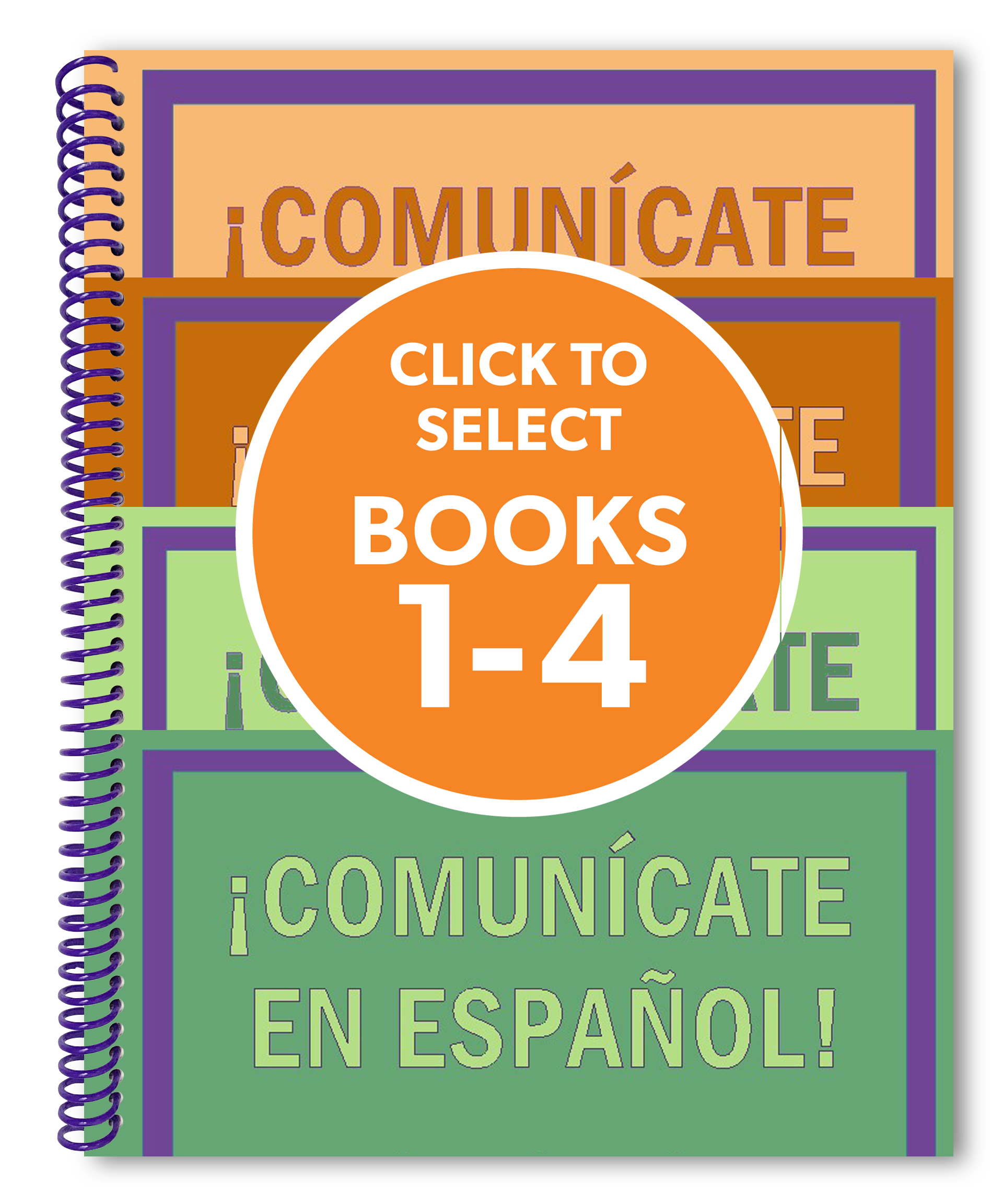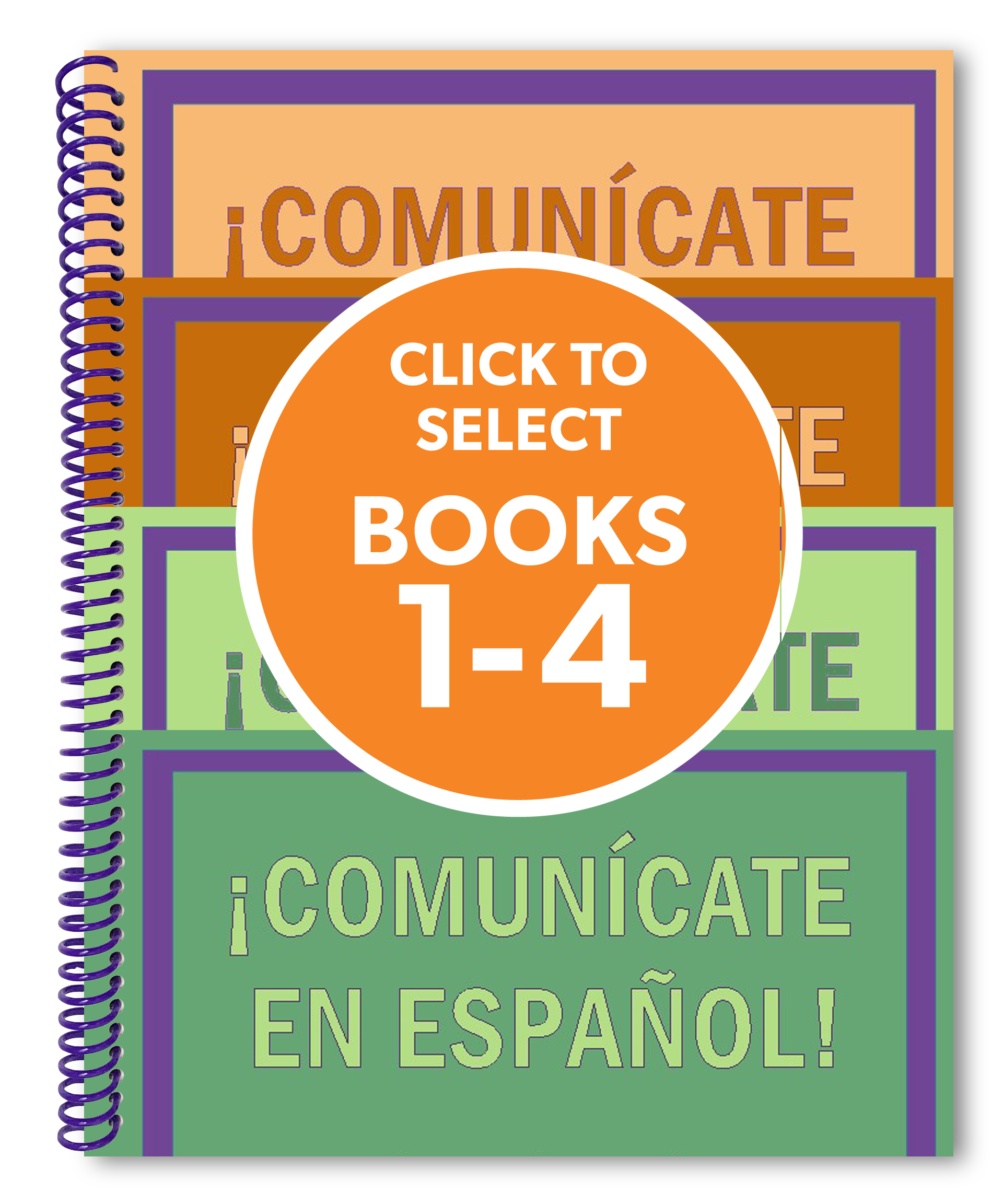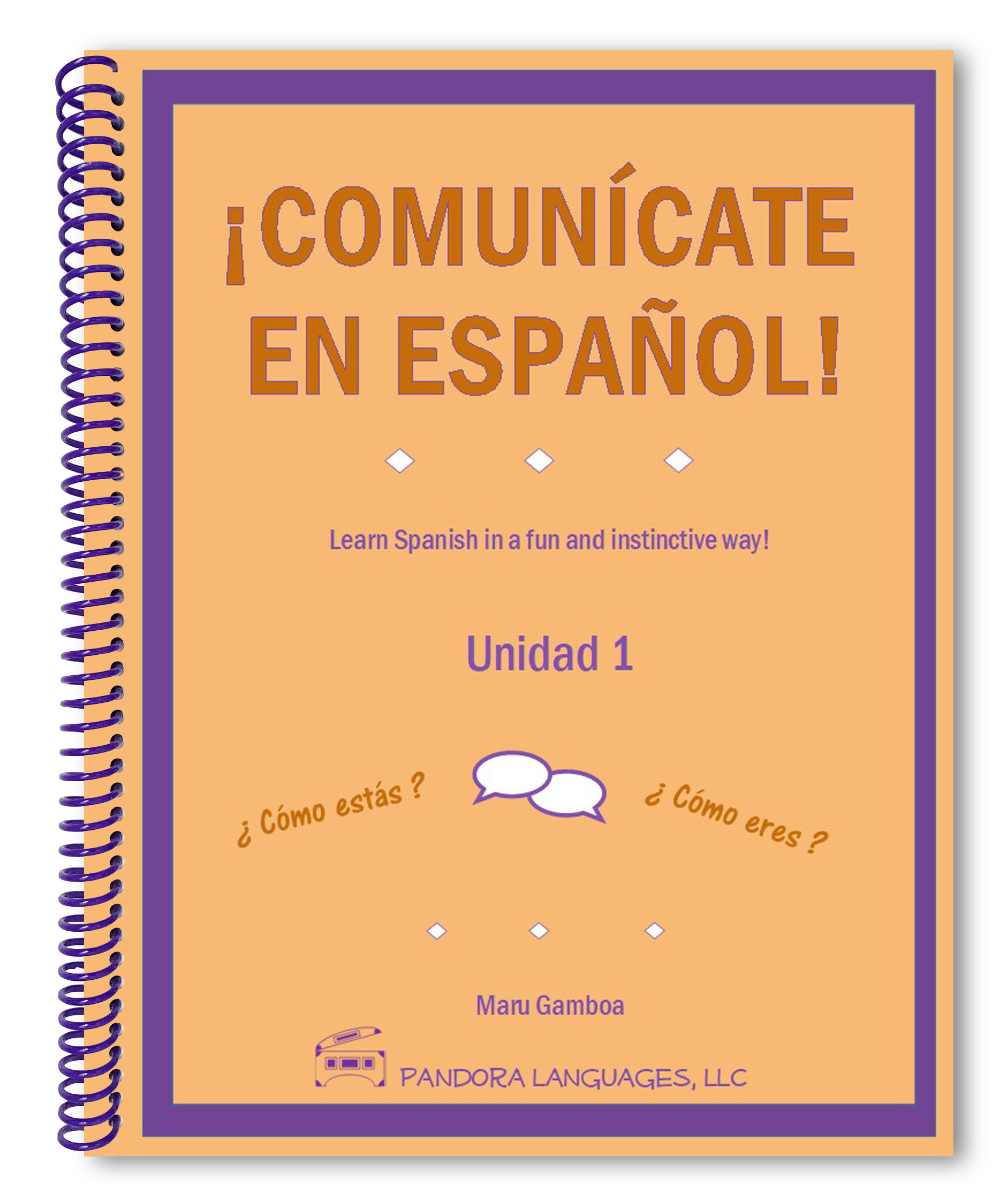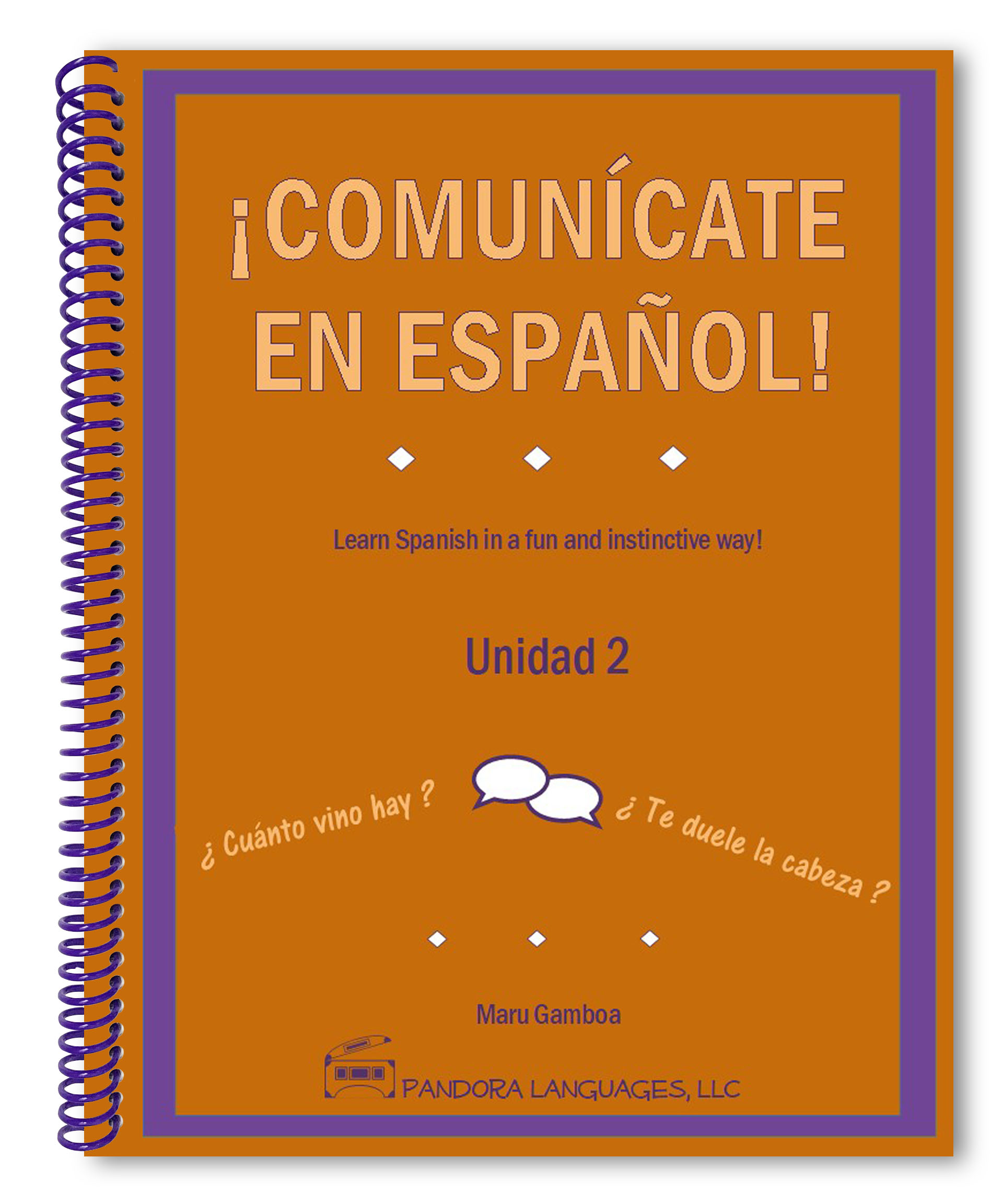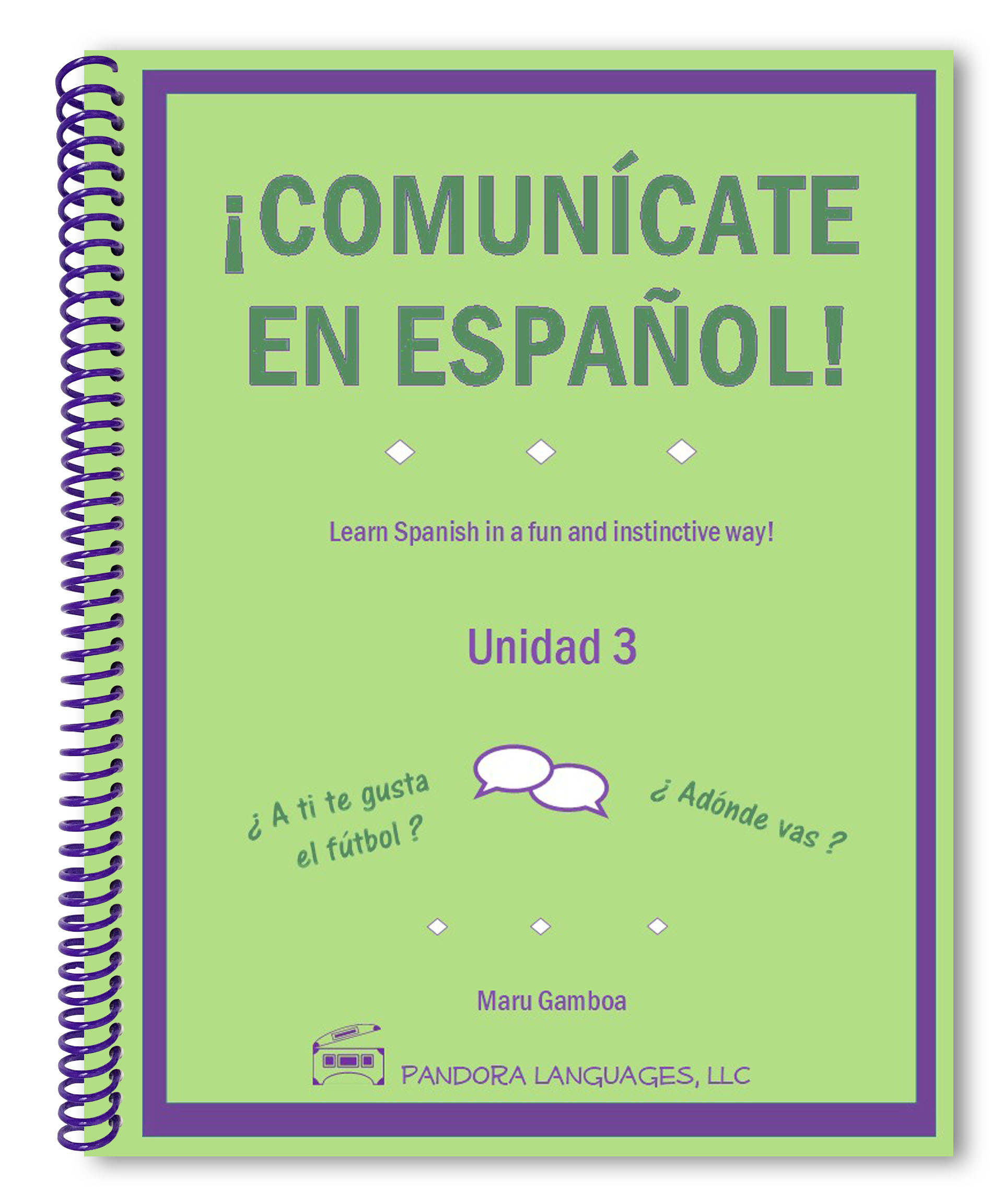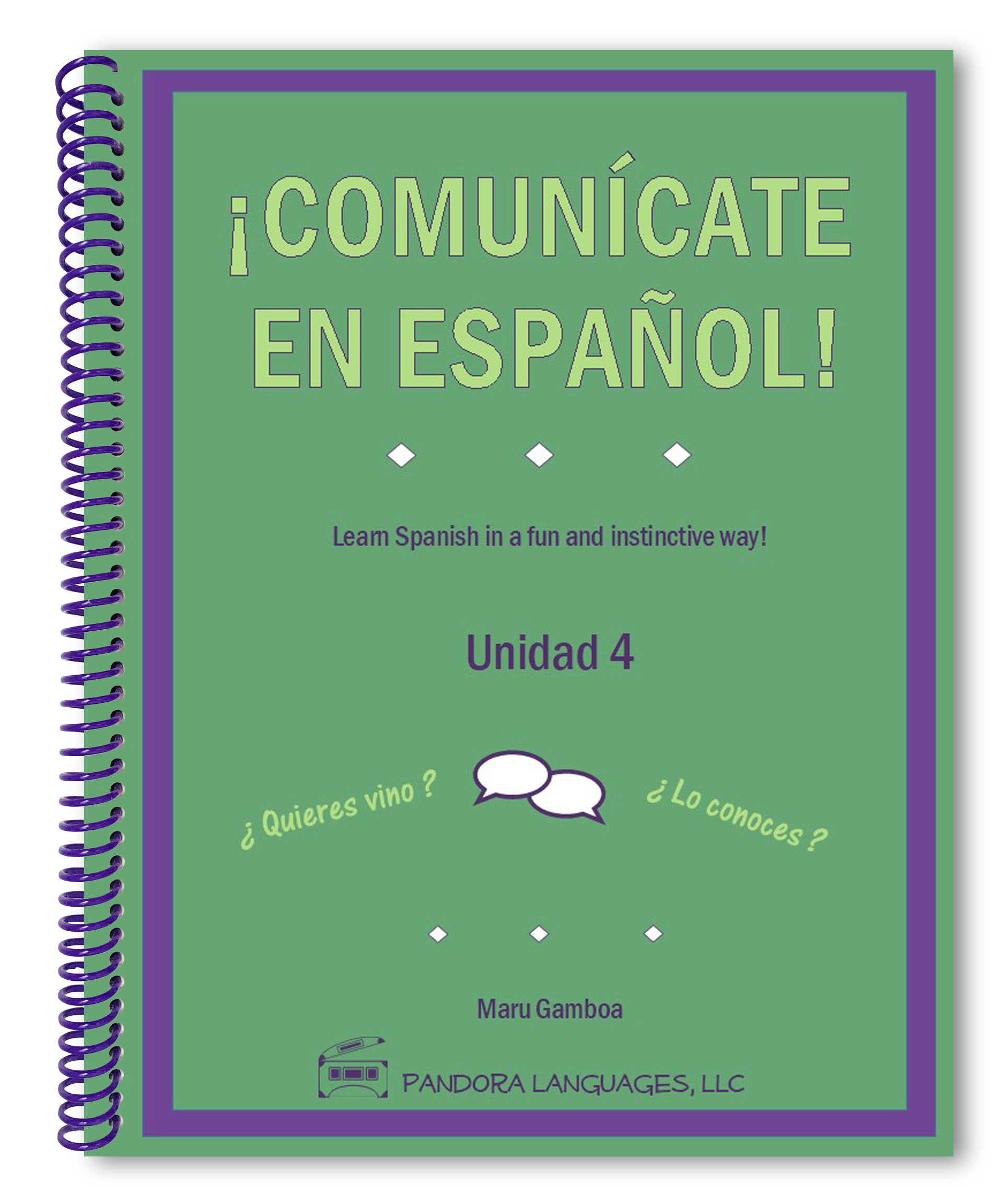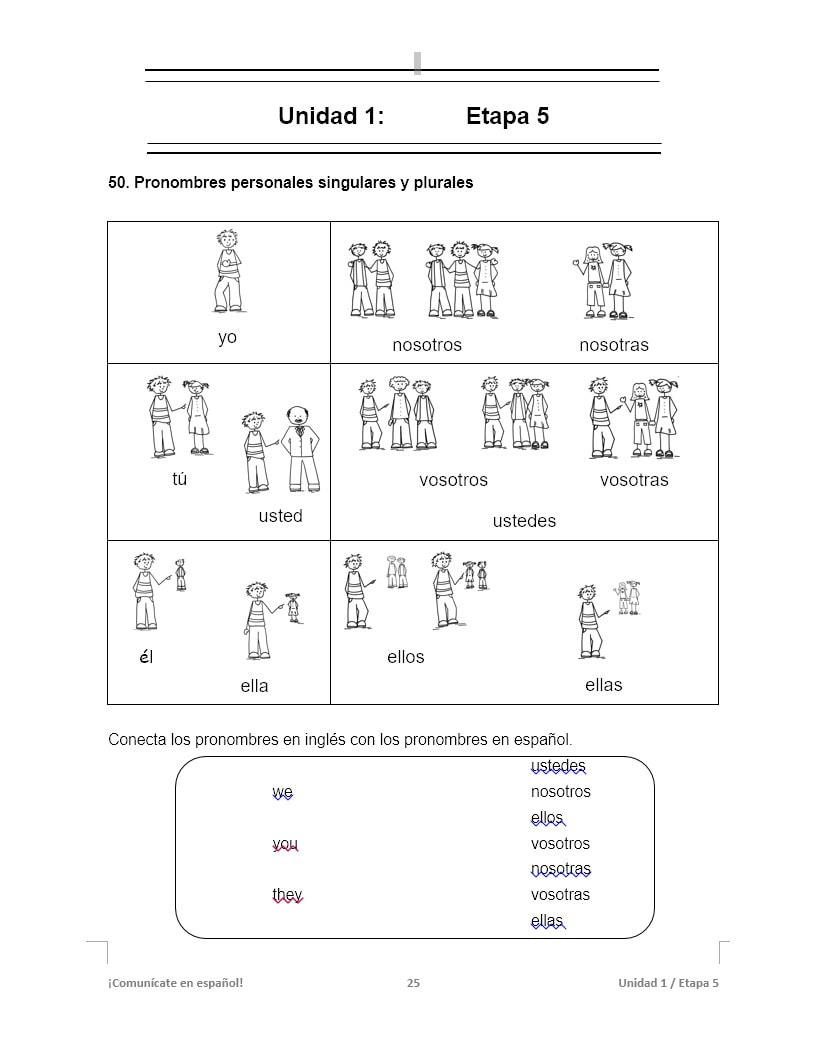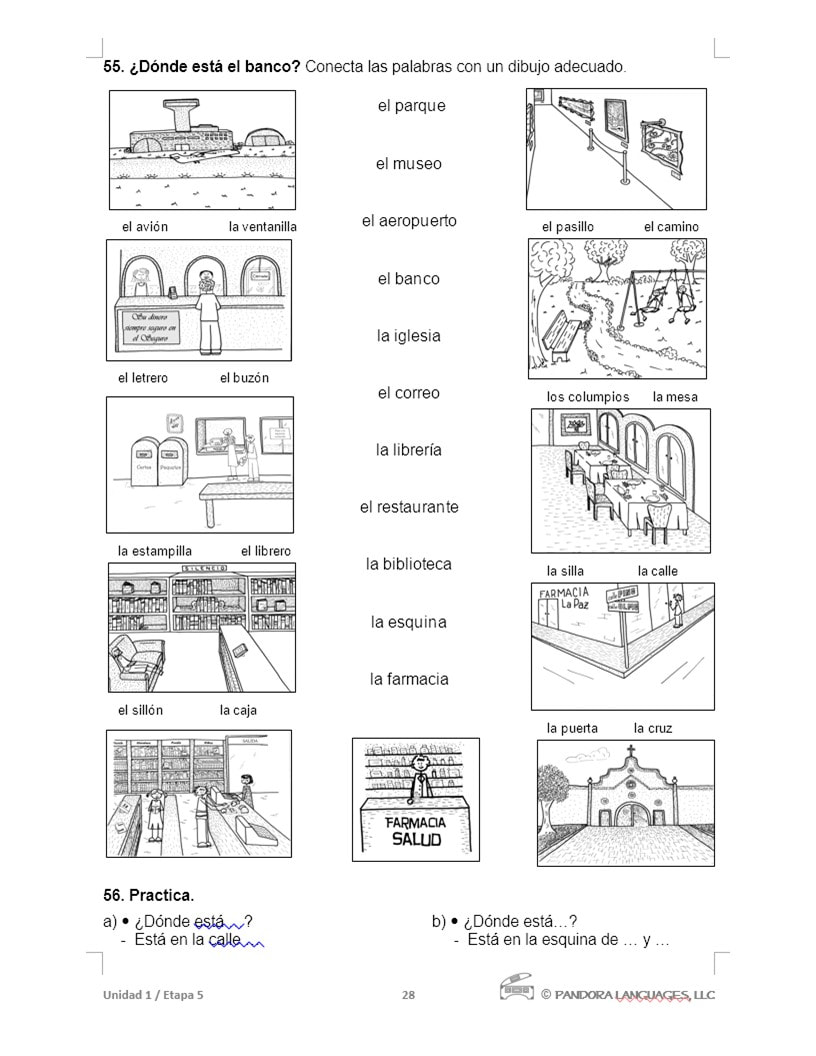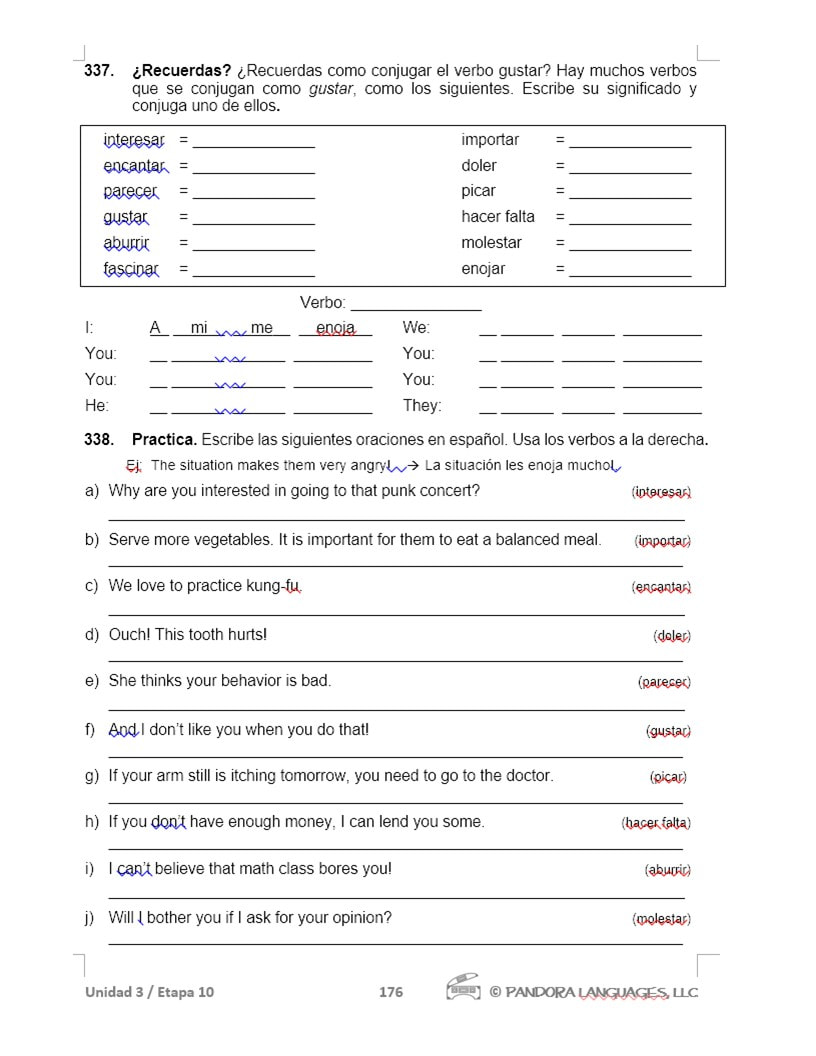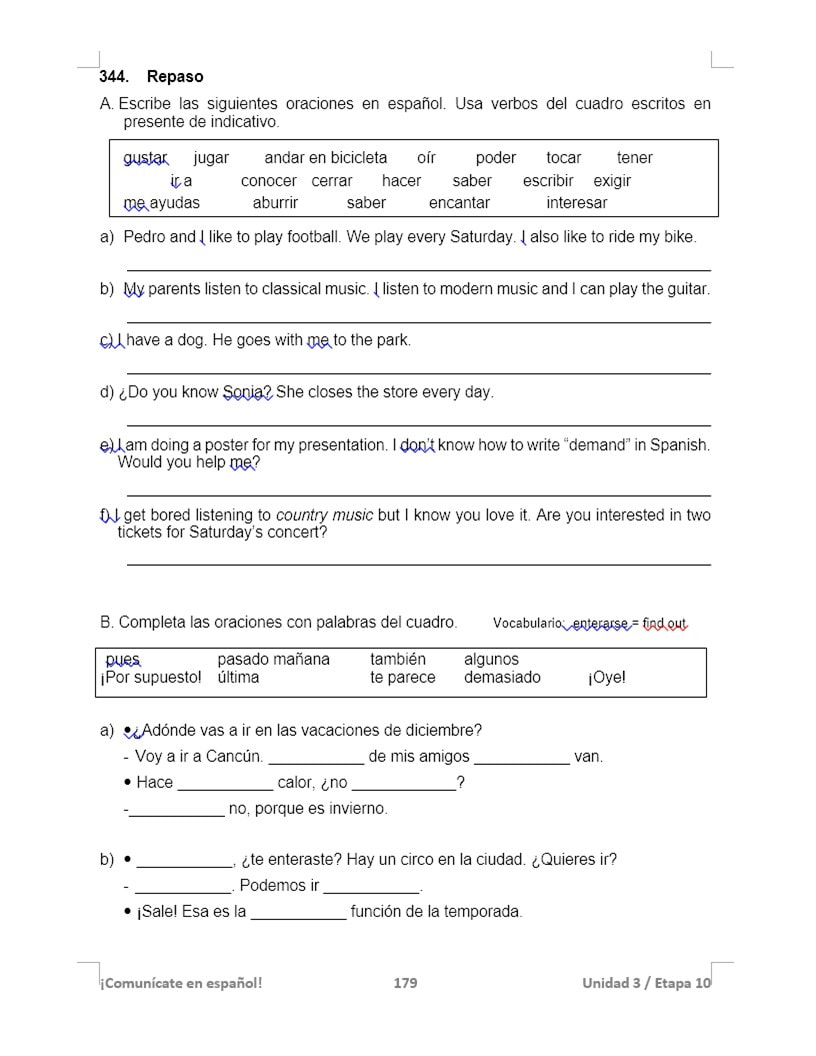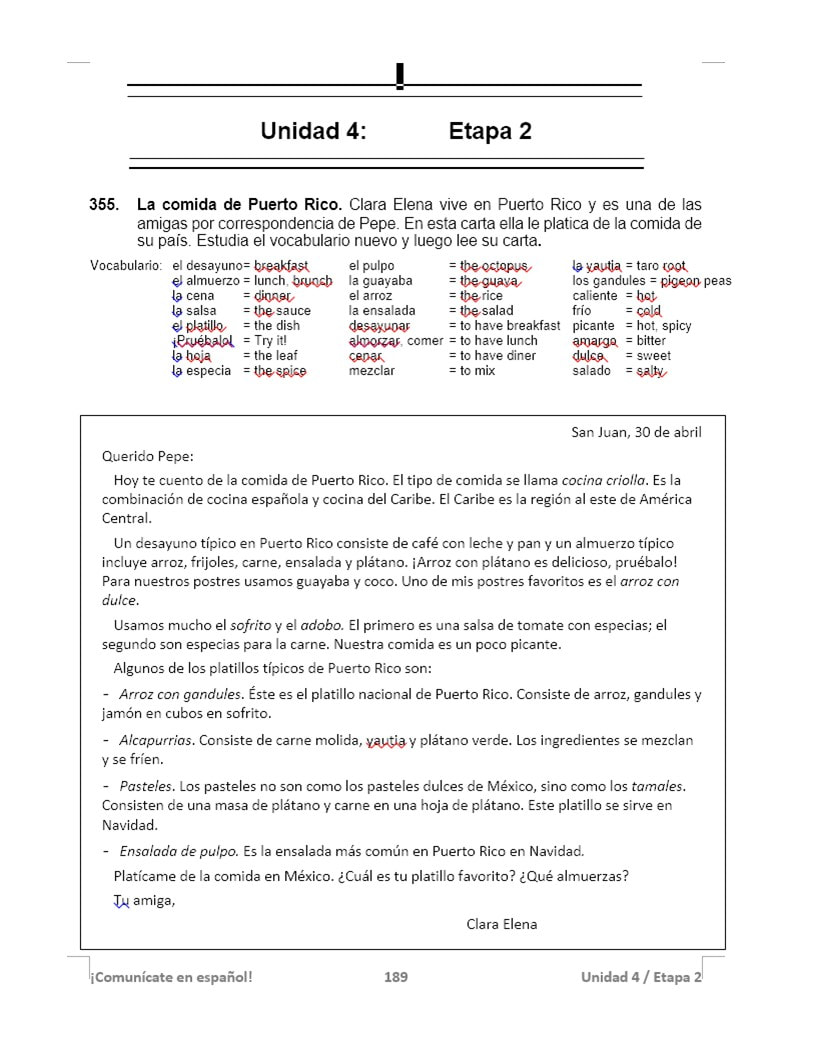- TEXTBOOK SERIES C—Adult Level
- >
- Comunícate en Español - SELECT FROM UNIDADES 1-4
Comunícate en Español - SELECT FROM UNIDADES 1-4
PRICE OF $26.00 IS PER BOOK | INCLUDES TAX AND SHIPPING
In Unit 1, students learn to use simple everyday expressions, maintain short conversations about personal details (¿Cómo te llamas?, ¿Qué haces?, ¿Te gusta leer?, etc.), invite someone to a party, buy a pair of pants, and describe the appearance and character of a person. They review the correct pronunciation of Spanish sounds and a variety of vocabulary. They understand the conjugation of regular and some irregular (ser, estar, tener) verbs. Size: 8.5 x 11" | Number of pages: 76
In Unit 2, students understand the use of the verbs ser and estar, there is and there are (hay), the present progressive, as well as the structure of affective verbs such as gustar and doler. They learn to ask questions, describe ownership, and tell time. They read and write short paragraphs that involve a relative wide vocabulary. They practice describing location of objects. They use a variety of regular and irregular verbs such as jugar, ir, oír, tener, poder, poner, and cerrar. Size: 8.5 x 11" | Number of pages: 74
In Unit 3, students understand the use of expressions with tener, tener que, and hay que, and differentiate between the different forms of cuál, quién, and cuánto, as well as mucho and poco. They review the pronouns associated with affective verbs (a mí, a ti, etc.) and learn more of these of verbs. They practice telling someone what to do (regular affirmative commands for tú), comparing, and indicating possession using possessive adjectives. They learn about irregular verbs in the present tense (irregular first person), verbs like coger (g → j), and to communicate in the future tense using ir + a. They understand the use of the a personal. They read conversations and write short paragraphs that involve a relative wide vocabulary. Size: 8.5 x 11" | Number of pages: 76
In Unit 4, students continue familiarizing with the different types of irregular verbs in the present tense (o → ue, e → i, e → ie) and learn to communicate in the past tense using the phrase acabarde. They get introduced to the concepts of direct and indirect objects and their respective pronouns. They understand the difference between conocer and saber. They practice narrating a sequence of events, using the a personal, comparing, using the different meanings of the verbs venir and pensar, and applying direct object pronouns. They get a better grasp of the Spanish language by understanding the creation of nouns from other nouns, verbs, and adjectives. They find out the different uses of the words que, luego, and entonces. They read conversations and short readings, and write short paragraphs that involve a relative wide vocabulary. Size: 8.5 x 11" | Number of pages: 76

